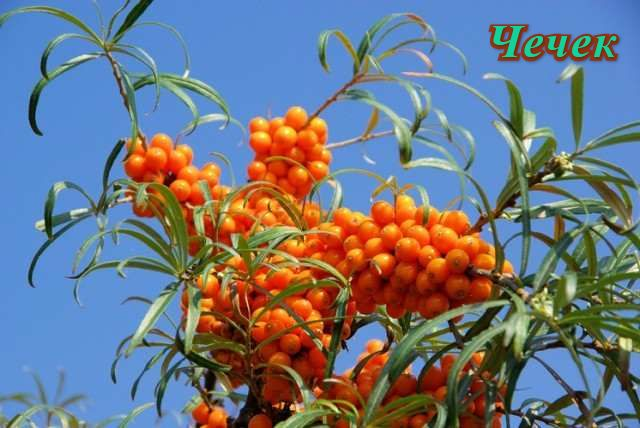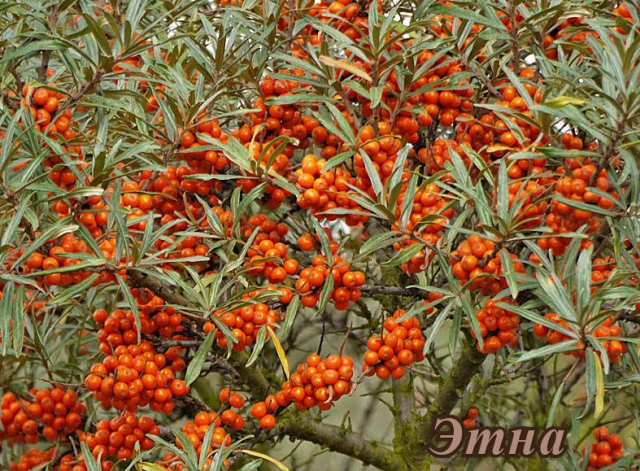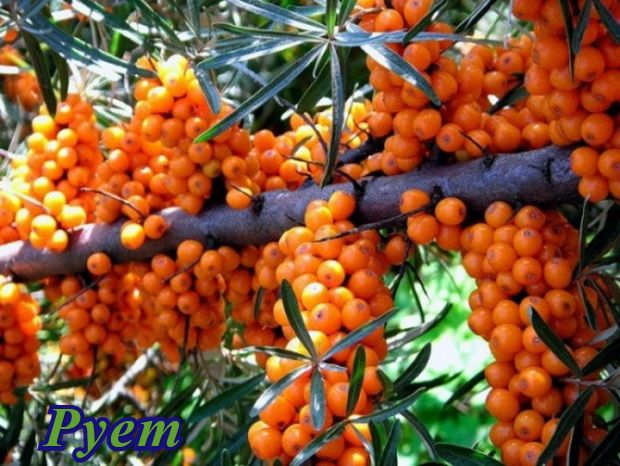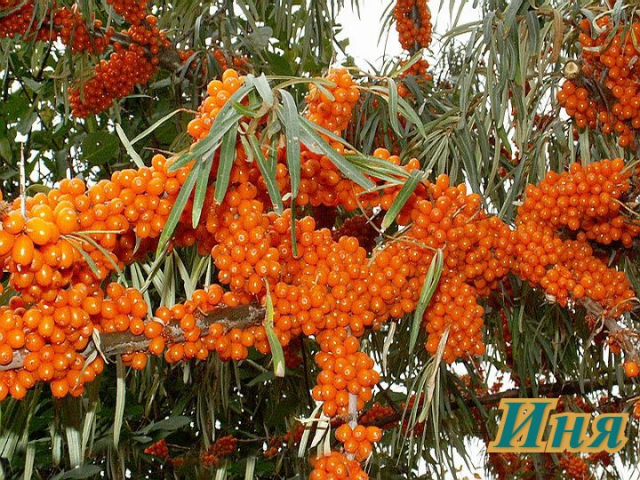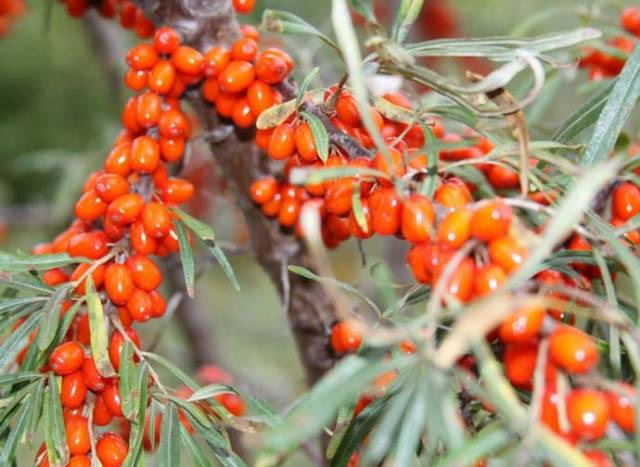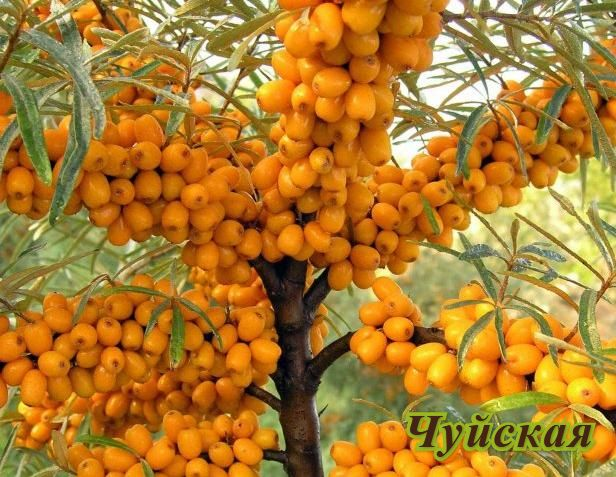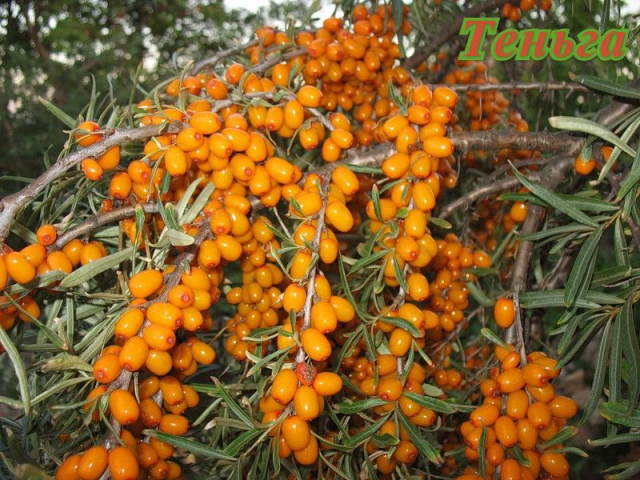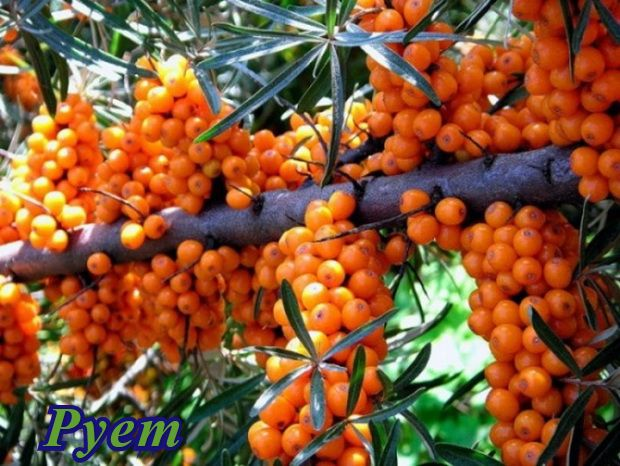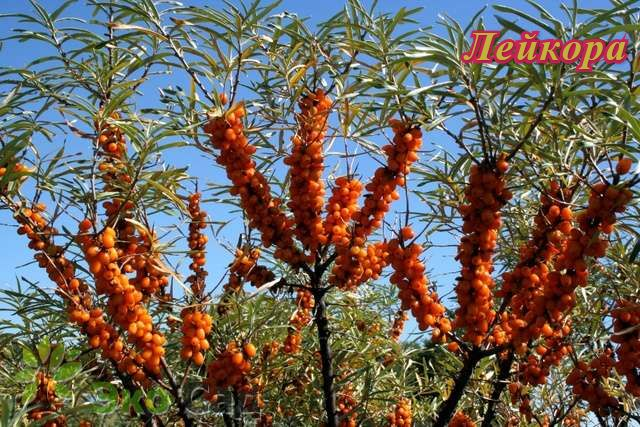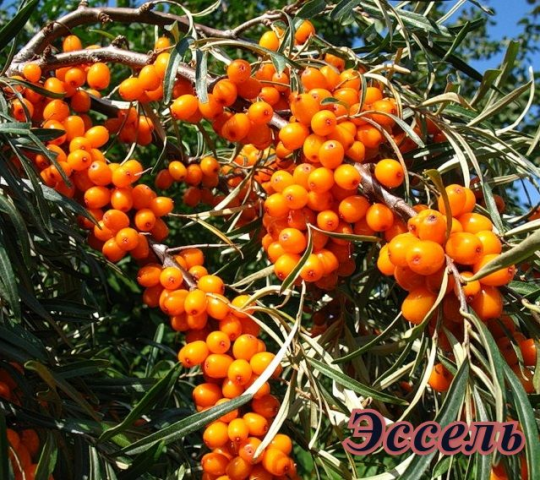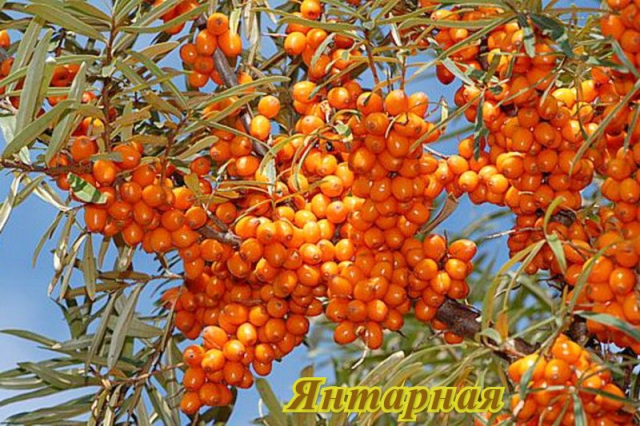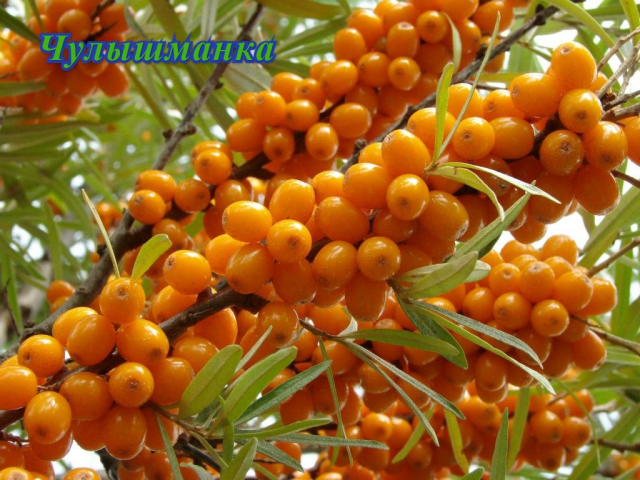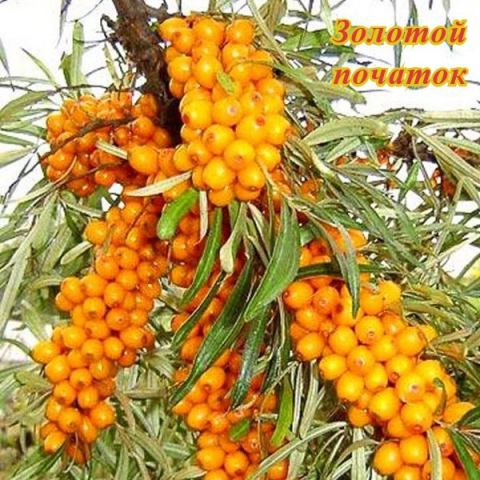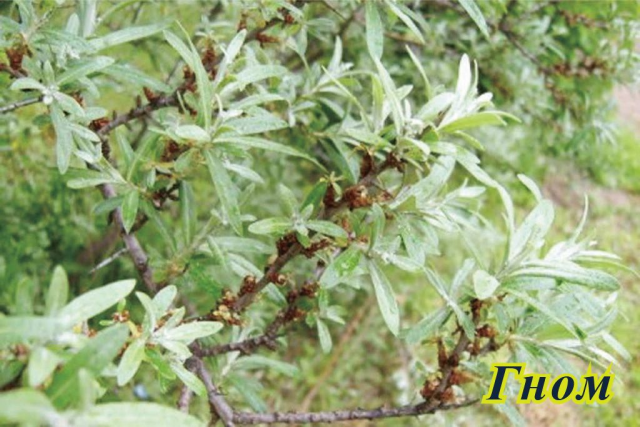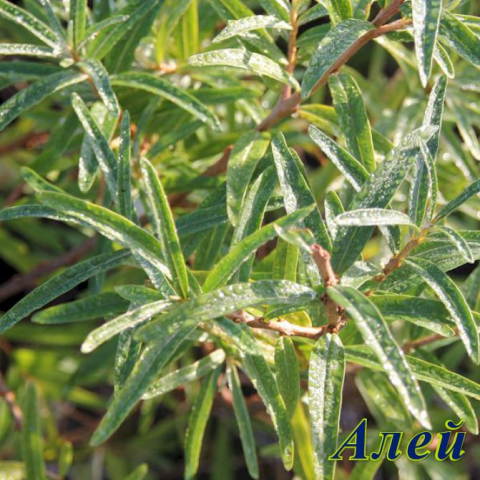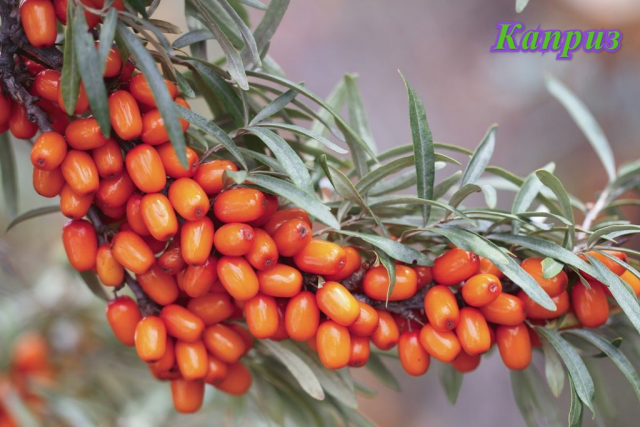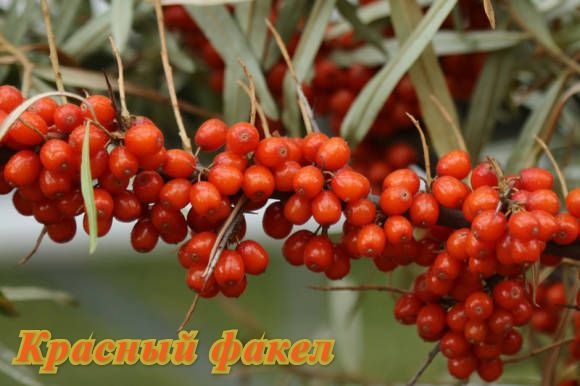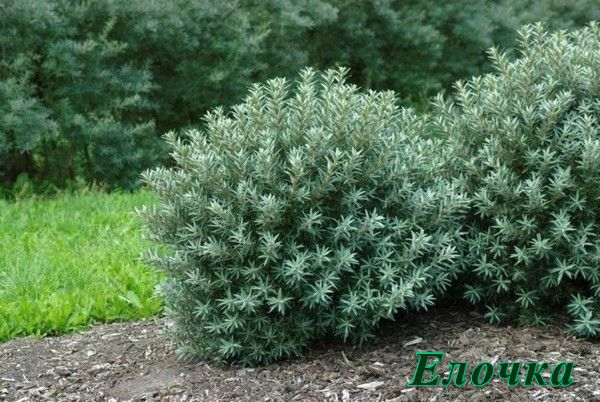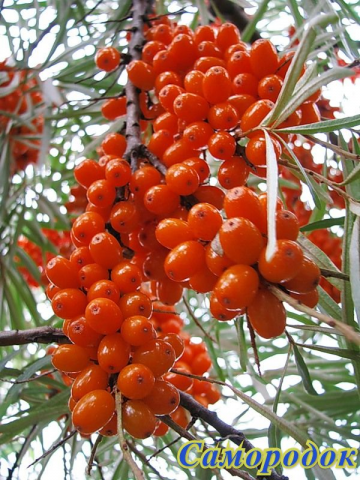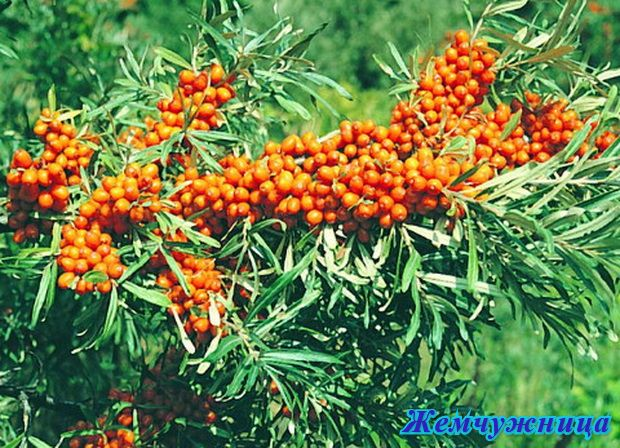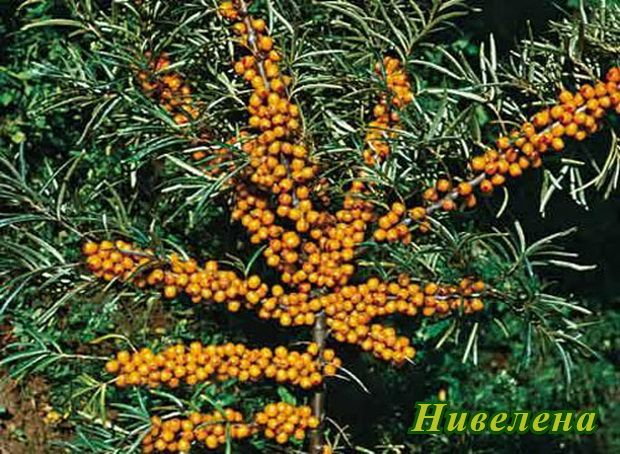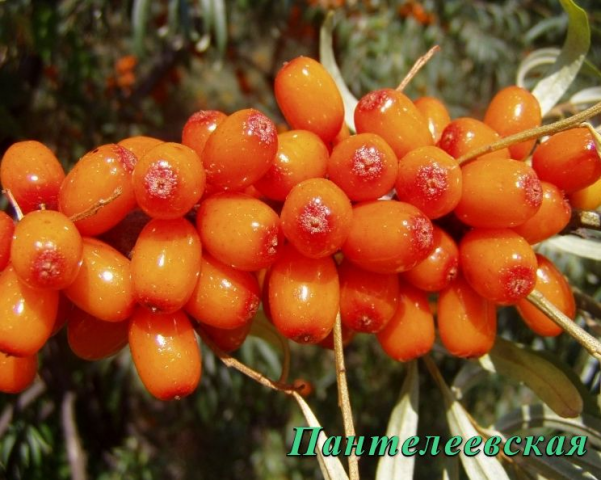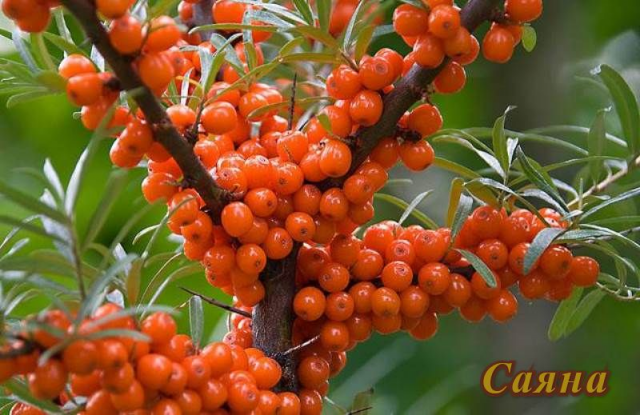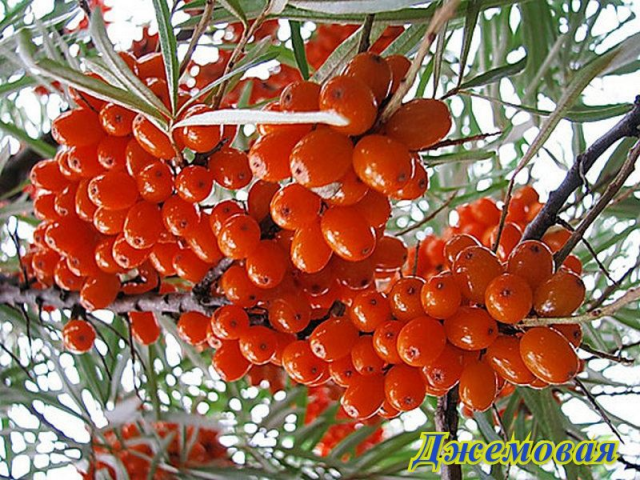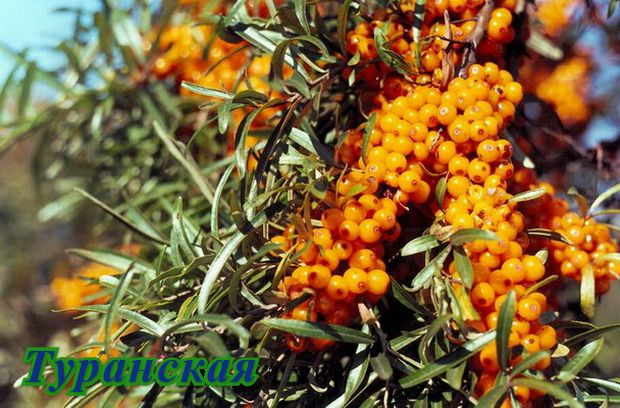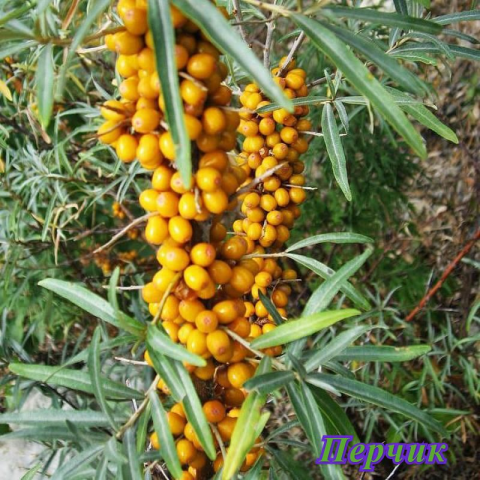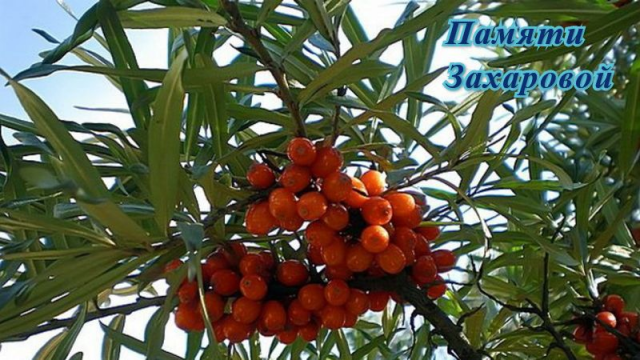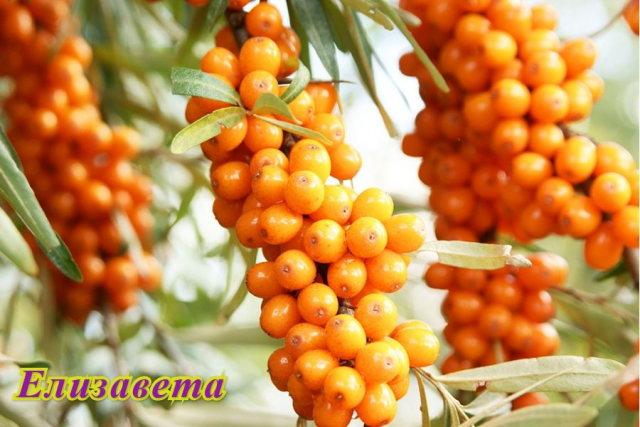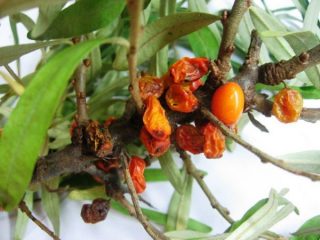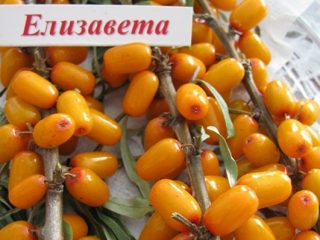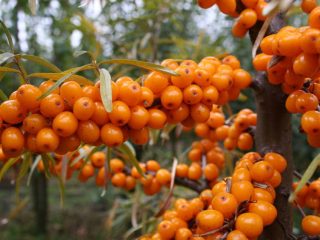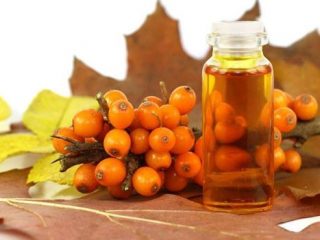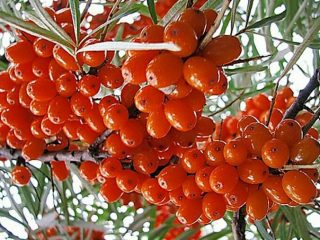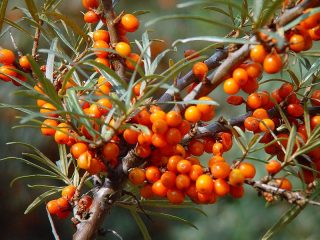Content
- 1 Classification of varieties
- 2 The highest yielding sea buckthorn varieties
- 3 Sea buckthorn varieties without thorns
- 4 Sweet varieties of sea buckthorn
- 5 Large-fruited sea buckthorn varieties
- 6 Low-growing varieties of sea buckthorn
- 7 Sea buckthorn varieties with high frost resistance
- 8 Male varieties of sea buckthorn
- 9 Classification of varieties by fruit color
- 10 Classification of varieties by maturity
- 11 Classification of varieties by date of registration in the State Register
- 12 How to choose the right variety
- 13 The best varieties of sea buckthorn for the Moscow region
- 14 The best varieties of sea buckthorn for Siberia
- 15 The best varieties of sea buckthorn for the Urals
- 16 The best varieties of sea buckthorn for central Russia
- 17 Conclusion
- 18 Testimonials
The currently known sea buckthorn varieties amaze the imagination with their diversity and colorful palette of characteristics. To find an option that is ideal for your own garden and meets all your wishes, you should familiarize yourself with a brief description of the various varieties. It is also important to take into account the recommendations given by breeders in relation to the peculiarities of growing sea buckthorn in different regions of the country.
Classification of varieties
Now it is difficult to imagine that even less than a century ago, sea buckthorn was considered a wild culture growing in Siberia and Altai, where sometimes it was mercilessly fought with it, as with weed... The true benefits of the small, sour yellow berries that abundantly cover the branches of a sprawling bush with sharp thorns were later appreciated.
Since the 70s. Of the twentieth century, more than seven dozen varieties of sea buckthorn were bred by domestic scientists. They differ in many characteristics: the size and color of the fruit, yield, taste, height and compactness of the bushes, and can also grow in different climatic conditions.
According to the ripening time of the fruits of the sea buckthorn variety, it is customary to divide into three large groups:
- early maturing (yield in early August);
- mid-season (ripen from late summer to mid-September);
- late ripening (bear fruit from the second half of September).
According to the height of the bush, these plants are:
- undersized (do not exceed 2–2.5 m);
- medium-sized (2.5-3 m);
- tall (3 m and more).
The shape of the sea buckthorn crown can be:
- spreading;
- compact (in different variations).
Indicators of frost resistance, drought resistance, resistance to diseases and pests in different varieties of sea buckthorn are high, medium and weak.
The fruits of this culture, depending on taste, have a different economic purpose:
- sea buckthorn varieties for processing (mainly with sour pulp);
- universal (sweet and sour taste);
- dessert (the most pronounced sweetness, pleasant aroma).
Fruit color also varies - it can be:
- orange (in the vast majority of sea buckthorn varieties);
- red (only a few hybrids can boast of such berries);
- lemon green (the only variety is Herringbone, considered decorative).
Distinguishes between different varieties of sea buckthorn and fruit size:
- in a wild-growing culture, they are small, weighing about 0.2–0.3 g;
- varietal berry weighs on average 0.5 g;
- "champions" with fruits from 0.7 to 1.5 g are considered large-fruited.
Sea buckthorn varieties are also divided in terms of yield:
- in the first cultivated hybrids, it was 5–6 kg per plant (now it is considered low);
- opinions differ regarding the average yield - in general, indicators of 6-10 kg can be considered as such;
- high-yielding varieties include many modern varieties that allow picking from 15 to 25 kg of berries from one plant.
A good variety of sea buckthorn, as a rule, combines several important qualities at once:
- high productivity;
- complete (or almost complete) absence of thorns;
- dessert taste of fruits.
Therefore, further division, which is based on only one of the characteristics, will be rather arbitrary. However, it is well suited to visualize the variety of sea buckthorn varieties and the strongest points of each of them.
The highest yielding sea buckthorn varieties
This group includes varieties that, with proper care, consistently bring generous yields every year. They are grown not only in the gardens of amateur farmers, but also in professional farms for large-scale processing and harvesting.
Sea buckthorn variety name | Ripening period | Productivity (kg per bush) | Crown shape | Thorns | Fruit | Resistance to extreme conditions, pests, diseases |
Chuiskaya | Mid august | 11–12 (with intensive cultivation technology up to 24) | Rounded, sparse | Yes, but not enough | Large (about 1 g), sweet and sour, bright orange | Average winter hardiness |
Botanical | Mid-early | Up to 20 | Compact, rounded pyramidal | Short, at the top of the shoots | Large, light orange, sour | Winter hardiness |
Botanical aromatic | End of August | Up to 25 | Rounded spreading, well formed | Short, at the top of the shoots | Medium (0.5-0.7 g), slightly acidic, juicy with a pleasant aroma | Winter hardiness |
Panteleevskaya | September | 10–20 | Thick, spherical | Very little | Large (0.85-1.1 g), red-orange | Pest resistance. Winter hardiness |
Gift to the Garden | End of August | 20-25 | Compact, umbrella-shaped | Little | Large (about 0.8 g), rich orange, sour, astringent taste | Resistant to drought, frost, wilting |
Abundant | Mid-early | 12-14 (but reaches 24) | Oval, spreading | Not | Large (0.86 g), deep orange, pronounced sour with sweet notes | Average winter hardiness |
Gift of Moscow State University | Early | Up to 20 | Spreading | Yes, but rare | Medium (about 0.7 g), amber color, sweet with "sourness" | Resistance to drying out |
Sea buckthorn varieties without thorns
Sea buckthorn shoots, abundantly covered with sharp, hard thorns, initially made it difficult to care for the plant and the harvesting process. However, breeders have painstakingly worked to create varieties that do not have thorns, or with a minimum of them. They performed this task brilliantly.
Sea buckthorn variety name | Ripening period | Productivity (kg per bush) | Crown shape | Thorns | Fruit | Resistance of the variety to extreme conditions, pests, diseases |
Altai | End of August | 15 | Pyramidal, easy to form | Absent | Large (about 0.8 g), sweet with pineapple flavor, orange | Resistance to diseases, pests. Winter hardiness |
Sunny | Middle | About 9 | Sprawling, medium density | Absent | Medium (0.7 g), amber color, pleasant sweet and sour taste | Resistance to pests, diseases. Winter hardiness |
Giant | Beginning - mid-August | 7,7 | Conical-rounded | Almost not | Large (0.9 g), sweet with "sourness" and light astringency, orange | Frost resistance. Leaves are prone to tick damage, fruits are prone to sea buckthorn fly |
Chechek | Late | About 15 | Spreading | Absent | Large (0.8 g), sweet with "sourness", bright orange with ruddy specks | Frost resistance |
Excellent | End of summer - beginning of autumn | 8–9 | Rounded | Absent | Medium (0.7 g), orange, with "sourness" | Frost resistance. Leaves are prone to tick damage, fruits are prone to sea buckthorn fly |
Socratic | August 18-20 | About 9 | Spreading | Absent | Medium (0.6 g), sweet and sour taste, red-orange | Resistance to fusarium, gall mite |
Girlfriend | End of summer - beginning of autumn | About 8 | Slightly spreading | Absent | Large (0.8-1 g), sweet and sour taste, rich orange | Resistance to frost, drought, temperature changes. Susceptibility to endomycosis. Damaged by sea buckthorn fly |
Sweet varieties of sea buckthorn
It would seem that the taste of sea buckthorn cannot be imagined without a pronounced characteristic "acidity". Nevertheless, the modern assortment of this culture will certainly delight lovers of sweets - dessert berries have a pleasant aroma and a high sugar content.
Sea buckthorn variety name | Ripening period | Productivity (kg per bush) | Crown shape | Thorns | Fruit | Resistance of the variety to extreme conditions, pests, diseases |
Beloved | End of August | 7,3 | Spreading | Along the entire length of the escape | Medium (0.65 g), sweet, bright orange | Resistance to disease and cold. Almost not affected by pests |
Digs | Early | 13,7 | Compressed | Short, at the top of the shoots | Medium (0.6 g), sweet and sour, orange | Cold resistance |
Tenga | Mid late | 13,7 | Oval, medium density | Yes, but a little | Large (0.8 g), sweet and sour, rich orange with "blush" | Winter hardiness. Sea buckthorn mite resistance |
Muscovite | September 1-5 | 9-10 | Compact, pyramidal | There are | Large (0.7 g), fragrant, juicy, orange with scarlet specks | Winter hardiness. High immunity to pests and fungal diseases |
Claudia | Late summer | 10 | Sprawling, flat-round | Little | Large (0.75-0.8 g), sweet, dark orange | Sea buckthorn fly resistance |
Moscow pineapple | Middle | 14–16 | Compact | Little | Medium (0.5 g), juicy, sweet with a characteristic pineapple aroma, dark orange with a scarlet spot | Winter hardiness. High immunity to disease |
Nizhny Novgorod sweet | End of August | 10 | Sprawling, sparse | Absent | Large (0.9 g), orange-yellow, juicy, sweet with a slight "sourness" | Frost resistance |
Large-fruited sea buckthorn varieties
Sea buckthorn varieties with large berries (about 1 g or more) are highly appreciated by gardeners.
Sea buckthorn variety name | Ripening period | Productivity (kg per bush) | Crown shape | Thorns | Fruit | Resistance of the variety to extreme conditions, pests, diseases |
Essel | Early | About 7 | Compact, round, loose | Absent | Large (up to 1.2 g), sweet with a slight "sourness", orange-yellow | Winter hardiness. Drought resistance average |
Augustine | Late summer | 4,5 | Medium spreading | Single | Large (1.1 g), orange, sour | Winter hardiness. Drought resistance average |
Elizabeth | Late | 5 to 14 | Compact | Hardly ever | Large (0.9 g), orange, juicy, sweet and sour taste with a slight hint of pineapple | Winter hardiness. High immunity to disease. Pest resistance |
Openwork | Early | 5,6 | Spreading | Absent | Large (up to 1 g), sour, bright orange | Frost resistance. Resistant to heat and drought |
Leucor | End of summer - beginning of autumn | 10–15 | Spreading | There are | Large (1-1.2 g), light orange, juicy, sour | Winter hardiness |
Zlata | End of August | Stable | Slightly spreading | There are | Large (about 1 g), concentrated in the "cob", sweet and sour, straw-egg color | Disease resistance |
Naran | Early | 12,6 | Medium spreading | Solitary, thin, at the top of the shoots | Large (0.9 g), sweet and sour, pale orange, aromatic | Frost resistance |
Low-growing varieties of sea buckthorn
The small height of the bushes of some varieties of sea buckthorn (up to 2.5 m) allows you to pick fruits without using auxiliary devices and ladders - most of the berries are at arm's length.
Sea buckthorn variety name | Ripening period | Productivity (kg per bush) | Crown shape | Thorns | Fruit | Resistance of the variety to extreme conditions, pests, diseases |
Inya | Early | 14 | Sprawling, rare | Yes, but not enough | Large (up to 1 g), sweet and sour, aromatic, red-orange with a blurred "blush" | Winter hardiness |
Amber | End of summer - beginning of autumn | 10 | Sprawling, rare | Absent | Large (0.9 g), amber-golden, sweet with "sourness" | Frost resistance |
Druzhina | Early | 10,6 | Compressed | Absent | Large (0.7 g), sweet and sour, red-orange | Resistance to drying out, cold weather. Diseases and pests are poorly affected |
Thumbelina | First half of August | 20 | Compact (up to 1.5 m high) | Yes, but not enough | Medium (about 0.7 g), sweet and sour with astringency, dark orange | Winter hardiness. Diseases and pests are poorly affected |
Baikal Ruby | 15-20 August | 12,5 | Compact, bush up to 1 m tall | Very little | Medium (0.5 g), coral color, sweet with pronounced "sourness" | Frost resistance. Pests and diseases are practically not affected |
Moscow beauty | 12-20 August | 15 | Compact | Yes, but not enough | Medium (0.6 g), intense orange color, dessert flavor | Winter hardiness. Immune to most diseases |
Chulyshmanka | Late summer | 10–17 | Compact, wide oval | Very little | Medium (0.6 g), sour, bright orange | Drought tolerance medium |
Sea buckthorn varieties with high frost resistance
Sea buckthorn is a northern berry, accustomed to the harsh and cold climate of Siberia and Altai. However, breeders have made efforts to develop varieties with record resistance to frosty winters and low temperatures.
Sea buckthorn variety name | Ripening period | Productivity (kg per bush) | Crown shape | Thorns | Fruit | Resistance of the variety to extreme conditions, pests, diseases |
Ear of gold | End of August | 20–25 | Compact (despite the fact that the tree is quite tall) | Yes, but not enough | Medium (0.5 g), orange with ruddy casks, sour (technical use) | Winter hardiness and disease resistance high |
Jam | Late summer | 9–12 | Oval spreading | Absent | Large (0.8-0.9 g), sweet and sour, red-orange | Winter hardiness and drought resistance are high |
Perchik | Middle | 7,7–12,7 | Medium spreading | Average amount | Medium (about 0.5 g), orange, shiny skin. Sour taste with pineapple aroma | Winter hardiness is high |
Trofimovskaya | Beginning of September | 10 | Umbrella | Average amount | Large (0.7 g), sweet and sour with pineapple aroma, dark orange | Winter hardiness is high |
Gift of Katun | End of August | 14–16 | Oval, medium density | Little or no | Large (0.7 g), orange | Winter hardiness and disease resistance high |
Ayula | Early autumn | 2–2,5 | Round, medium density | Absent | Large (0.7 g), deep orange with blush, sweet with sourness | Winter hardiness and disease resistance high |
Gratifying | Middle | 13 | Pyramidal, compressed | There are | Medium (0.6 g), sour, slightly aromatic, red with orange | Winter hardiness and disease resistance high |
Male varieties of sea buckthorn
Sea buckthorn is classified as a dioecious plant. On some bushes ("female"), exclusively pistillate flowers are formed, which subsequently form fruits, while on others ("male") - only staminate flowers, producing pollen. The sea buckthorn is pollinated by the wind, therefore a necessary condition for the fruiting of female specimens is the presence of a male growing nearby.
Young plants look the same at first. Differences become noticeable in 3-4 years, when flower buds begin to form.
Currently, special "male" pollinating varieties have been developed that do not produce fruits, but generate a significant amount of pollen. Such a plant will be enough for one in the garden for 10-20 female bushes of another variety.
Sea buckthorn variety name | Ripening period | Productivity (kg per bush) | Crown shape | Thorns | Fruit | Resistance of the variety to extreme conditions, pests, diseases |
Alei | — | — | Powerful, spreading (tall bush) | Absent | Sterile | Resistance to pests, diseases. Winter hardiness |
Gnome | — | — | Compact (bush no higher than 2-2.5 m) | Yes, but not enough | Sterile | Resistance to pests, diseases. Winter hardiness |
In fact, this information is highly questionable. To date, not a single variety of this culture has been entered into the State Register, which would be considered self-fertile. The gardener should remain vigilant. It is possible that under the guise of a self-pollinating variety of sea buckthorn, he can be offered a narrow-leaved goose (a related self-fertile plant), a prototype obtained as a result of mutations (but not a stable variety), or a female plant of any of the existing varieties with "male" grafted into the crown shoots.
Classification of varieties by fruit color
The berries of most varieties of sea buckthorn delight the eye with all shades of orange - from delicate, shimmering golden or linen, to bright, fervently blazing with a reddish "blush". However, there are several options that stand out from the general ranks. Sea buckthorn varieties with red fruits, not to mention the lemon-green Herringbone, will become a true "highlight" of the garden plot, causing surprise and admiration for their unusual appearance.
Orange sea buckthorn varieties
Examples of varieties of sea buckthorn with orange berries are:
Sea buckthorn variety name | Ripening period | Productivity (kg per bush) | Crown shape | Thorns | Fruit | Resistance of the variety to extreme conditions, pests, diseases |
Caprice | Middle | 7,2 | Slightly spreading | Average amount | Medium (about 0.7 g), rich orange, sweet with a slight "sourness", aromatic |
|
Turan | Early | About 12 | Medium spreading | Absent | Medium (0.6 g), sweet and sour, dark orange | Frost resistance. It is weakly affected by pests |
Sayan | Mid-early | 11–16 | Compact | Yes, but not enough | Medium (0.6 g), sweet with "sourness", orange with scarlet "poles" | Winter hardiness. Fusarium resistance |
Rostov anniversary | Middle | 5,7 | Slightly spreading | Yes, but not enough | Large (0.6-0.9 g), sour with a sweet taste, light orange, refreshing aroma | Increased resistance to drought, cold weather, diseases, pests |
The lights of the Yenisei | Early | About 8.5 | Medium spreading | Yes, but not enough | Medium (up to 0.6 g), sweet and sour, orange, refreshing aroma | Increased resistance to cold weather.Drought and heat tolerance medium |
Golden cascade | August 25 - September 10 | 12,8 | Spreading | Absent | Large (about 0.9 g), orange, sweet and sour, refreshing aroma | Winter hardiness. Endomycosis and sea buckthorn fly are weakly affected |
Ayaganga | Second decade of September | 7-11 kg | Compact, rounded | Average amount | Medium (0.55 g), deep orange | Winter hardiness. Sea buckthorn moth resistance |
Red sea buckthorn
There are few varieties of sea buckthorn with red fruits. The most famous of them:
Sea buckthorn variety name | Ripening period | Productivity (kg per bush) | Crown shape | Thorns | Fruit | Resistance of the variety to extreme conditions, pests, diseases |
Red torch | Late | About 6 | Slightly spreading | Single | Large (0.7 g), red with orange tinge, sweet and sour, with aroma | Resistance to frost, disease, pests |
Krasnoplodnaya | Early | About 13 | Medium spreading, slightly pyramidal | There are | Medium (0.6 g), red, sour, aromatic | Resistance to diseases, pests. Average winter hardiness. |
Rowan | Middle | Until 6 | Narrow pyramidal | Single | Dark red, shiny, aromatic, bitter | Resistance to fungal diseases |
Siberian blush | Early | 6 | Highly spreading | Average amount | Medium (0.6 g), red with shine, sour | Winter hardiness. Average resistance to sea buckthorn fly |
Sea buckthorn with lemon green berries
The beautiful Herringbone, no doubt, will delight those who are interested not only in the harvest, but also in the original, creative design of the site. In this case, it is definitely worth purchasing and planting this rather rare variety. Its bush really resembles a small herringbone: it is about 1.5-1.8 m tall, the crown is compact and dense, has a pyramidal shape. Silvery-green leaves are narrow and long, gathered in whorls at the ends of the branches. The plant has no thorns.
Fir-trees ripen late - at the end of September. Its berries have a unique lemon-green color, but at the same time they are small and very sour in taste.
This variety of sea buckthorn is considered resistant to mycotic wilting, frost and temperature extremes. He practically does not give overgrowth.
Classification of varieties by maturity
The ripening time for sea buckthorn fruits varies from early August to late September. It directly depends on the variety and on the climatic conditions of the region in which the bush grows. The rounded shape of the berries and their bright, rich color are signs that the time has come to harvest.
Early ripe
In the first half of August (and in some places even earlier - at the end of July) gardeners are delighted with berries by those varieties of sea buckthorn that are early ripe.
Sea buckthorn variety name | Ripening period | Productivity (kg per bush) | Crown shape | Thorns | Fruit | Resistance of the variety to extreme conditions, pests, diseases |
Minusa | Very early (until mid-August) | 14–25 | Sprawling, medium density | Absent | Large (0.7 g), sweet and sour, orange-yellow | Winter hardiness. Resistance to drying out |
Zakharovskaya | Early | About 9 | Medium spreading | Absent | Medium (0.5 g), bright yellow, sweet with "sourness", aromatic | Frost resistance. Disease and pest resistance |
Nugget | Early | 4–13 | Wide round | Yes, but not enough | Large (about 7 g), red-yellow, sweet with a slight "sourness" | Weak resistance to wilting |
Altai news | Early | 4-12 (up to 27) | Sprawling, rounded | Absent | Medium (0.5 g), yellow with raspberry spots on the "poles", sweet and sour | Resistant to wilting. Weak winter hardiness |
Pearl oyster | Very early (until mid-August) | 10 | Oval | Very rare | Large (0.8 g), sweet and sour, bright orange | Winter hardiness |
Etna | Early | To 10 | Spreading | Yes, but not enough | Large (0.8-0.9 g), sweet and sour, reddish orange | Winter hardiness is high. Weak resistance to fungal drying and scab |
Vitamin | Early | 6–9 | Compact, oval | Very rare | Medium (up to 0.6 g), yellowish-orange with a raspberry spot, sour |
|
Mid-season
Sea buckthorn varieties of average ripeness ripen a little later. You can pick berries from the second half of August until the beginning of autumn. Examples include:
Sea buckthorn variety name | Ripening period | Productivity (kg per bush) | Crown shape | Thorns | Fruit | Resistance of the variety to extreme conditions, pests, diseases |
Chanterelle | Middle | 15–20 | Slightly spreading |
| Large (0.8 g), reddish-orange, fragrant, sweet | Resistance to diseases, pests, cold weather |
Bead | Middle | 14 | Highly spreading | Single | Medium (about 0.5 g), orange, aromatic, sweet and sour | Drought tolerance |
Nivelena | Middle | About 10 | Slightly spreading, umbrella-shaped | Single | Medium (0.5 g), sourish, aromatic, yellow-orange | Winter hardiness |
In memory of Zakharova | Middle | 8–11 | Spreading | Absent | Medium (0.5 g), sweet and sour, juicy, red | Winter hardiness. Resistance to gall mite, fusarium |
Moscow transparent | Middle | Up to 14 | Wide pyramidal | Yes, but not enough | Large (0.8 g), amber-orange, juicy, sweet and sour, transparent flesh | Winter hardiness |
Golden cascade | Middle | 11,3 | Highly spreading | Absent | Large (0.8 g), aromatic, sweet and sour, rich orange | Frost resistance. Weakly affected by sea buckthorn fly and endomycosis |
Perchik hybrid | Middle | 11–23 | Oval, medium density | Yes, but not enough | Medium (0.66 g), sour, orange-red | Resistance to freezing, drying |
Late ripening
Late-ripening sea buckthorn varieties in some regions (mainly southern ones) are capable of producing crops even after the first frosts hit. Among those:
Sea buckthorn variety name | Ripening period | Productivity (kg per bush) | Crown shape | Thorns | Fruit | Resistance of the variety to extreme conditions, pests, diseases |
Ryzhik | Late | 12–14 | Relatively sprawling |
| Medium (0.6-0.8 g), reddish, sweet and sour, with aroma | Resistance to drying out, endomycosis, cold weather |
Orange | Late | 13–30 | Rounded | Single | Medium (0.7 g), sweet and sour with astringency, bright orange |
|
Zyryanka | Late | 4–13 | Rounded | Single | Medium (0.6-0.7 g), fragrant, sour, yellow-orange with spots of "blush" |
|
Surprise Baltic | Late | 7,7 | Highly spreading | Few | Small (0.25-0.33 g), red-orange, aromatic, moderately sour | Frost resistance. Wilt resistance |
Mendeleevskaya | Late | Up to 15 | Sprawling, thick |
| Medium (0.5-0.65 g), sweet and sour, dark yellow |
|
Amber necklace | Late | Up to 14 | Slightly spreading |
| Large (1.1 g), sweet and sour, light orange | Frost resistance. Resistance to drying out, endomycosis |
Yakhontova | Late | 9–10 | Medium spreading | Yes, but not enough | Large (0.8 g), reddish with "dots", sweet and sour with a delicate taste | Resistance to diseases, pests. Winter hardiness |
Classification of varieties by date of registration in the State Register
Another option for the conditional separation of varieties is suggested by the State Register. The first "in seniority" in it are those who began the miraculous transformation of the wild sea buckthorn, through the efforts of scientists, step by step, brought it into line with the desires and needs of man. And those opposite which new dates are displayed are the best examples of the achievements of breeding science at the present stage.
Old varieties of sea buckthorn
Sea buckthorn varieties, bred by breeders in the second half of the last century, can be conditionally referred to as "old". Nevertheless, a significant part of them have not lost their popularity to this day:
- Chuiskaya (1979);
- Giant, Excellent (1987);
- Ayaganga, Alei (1988);
- Sayana, Zyryanka (1992);
- Botanical amateur, Muscovite, Perchik, Panteleevskaya (1993);
- Favorite (1995);
- Pleasing (1997);
- Nivelena (1999).
Professional farmers and amateur gardeners still value these varieties for their healing qualities, high content of vitamins and nutrients, winter hardiness and drought resistance, proven over the years. Many of them are large-fruited, tasty, fragrant, look decorative and give a good harvest. Due to this, they continue to successfully compete with new varieties and are in no hurry to give up their positions.
New varieties of sea buckthorn
Over the past ten years, the list of the State Register has been supplemented by many interesting varieties of sea buckthorn, demonstrating the latest achievements of breeders. For example, we can name some of them, the characteristics of which have already been given above:
- Yakhontovaya (2017);
- Essel (2016);
- Sokratovskaya (2014);
- Jam, Pearl Oyster (2011);
- Augustine (2010);
- Openwork, Lights of the Yenisei (2009);
- Gnome (2008).
As you can see, the emphasis was on eliminating many of the shortcomings inherent in earlier varieties. Modern hybrids are distinguished by better resistance to diseases, unfavorable climatic conditions and the external environment. Their fruits are larger and tastier, and the yield is higher. The priority is also a low growth of bushes and more compact crowns, which allows you to plant more plants in a limited area. The absence of thorns on the branches and the not too dense arrangement of berries sitting on long stalks greatly simplifies the care of the bush and harvesting. All this, undoubtedly, pleases connoisseurs of sea buckthorn and attracts the attention of those farmers who previously preferred not to plant this plant on the site, fearing the difficulties associated with its cultivation.
How to choose the right variety
You need to carefully and carefully choose a sea buckthorn variety for your own garden. It is necessary to take into account the climatic features of the region, take into account the indicators of winter hardiness of the plant and its resistance to drought, pests and diseases. It is equally important to pay attention to the yield, growth and compactness of the bush, taste, size and purpose of the fruit. Then the choice will almost certainly be successful.
The best varieties of sea buckthorn for the Moscow region
For successful cultivation in the Moscow region, it is advisable to choose sea buckthorn varieties that are not afraid of temperature changes characteristic of this region - a sharp alternation of winter frosts with prolonged thaws.
Excellent options for the gardens of the Moscow region will be:
- Botanical;
- Botanical aromatic;
- Rowan;
- Pepper;
- Beloved;
- Muscovite;
- Trofimovskaya;
- Pleasing.
Sea buckthorn varieties without thorns for the Moscow region
Separately, I would like to highlight the varieties of sea buckthorn without thorns or with a small number of them, suitable for the Moscow region:
- Augustine;
- Moscow beauty;
- Botanical amateur;
- Giant;
- Vatutinskaya;
- Nivelena;
- Gift to the garden;
- Excellent.
The best varieties of sea buckthorn for Siberia
The main criterion for the selection of sea buckthorn varieties for cultivation in Siberia is frost resistance. It should be borne in mind that varieties that are resistant to cold can freeze after the onset of a thaw and do not tolerate the summer heat well.
Recommended for growing in Siberia:
- Altai news;
- Chuiskaya;
- Siberian blush;
- Orange;
- Panteleevskaya;
- A golden ear;
- Sayan.
Seabuckthorn besshorn varieties for Siberia
Among the thornless or low-prickly varieties of sea buckthorn, the following are well suited for Siberia:
- Beloved;
- Nugget;
- Chechek;
- Sunny;
- Minus;
- Giant;
- In memory of Zakharova;
- Altai.
The best varieties of sea buckthorn for the Urals
In the Urals, as in Siberia, wild sea buckthorn grows freely, so the climate is well suited for varieties that can withstand sharp drops in temperature and a lack of moisture. The sea buckthorn shrubs recommended for planting in this region are distinguished by frost resistance, yield, medium or large fruits:
- Giant;
- Gratifying;
- Elizabeth;
- Chanterelle;
- Chuiskaya;
- Ginger;
- Inya;
- Excellent;
- Sunny;
- Amber necklace.
The best varieties of sea buckthorn for central Russia
For central Russia (as, indeed, for the Moscow region), sea buckthorn varieties of the European selection direction are well suited. Despite the rather mild climate, winters here are often harsh and not very snowy, and summers may well be dry and hot. European varieties tolerate sharp temperature changes better than Siberian ones.
Well established in this region:
- Augustine;
- Nivelena;
- Botanical amateur;
- Giant;
- Vatutinskaya;
- Vorobievskaya;
- Moscow pineapple;
- Rowan;
- Pepper Hybrid;
- Zyryanka.
How to care for sea buckthorn in the middle lane, how to feed it, what problems you most often have to face, the video will tell you in more detail:
Conclusion
Sea buckthorn varieties for a personal plot should be selected taking into account the climatic and weather conditions of the region where they are to grow. A large selection of options allows you to find, among the achievements of modern breeding, bred for a specific zone, the ideal combination of qualities that satisfies the needs of the most demanding gardeners. The main thing is to carefully read the characteristics of the varieties and take into account their strengths and weaknesses, so that caring for sea buckthorn is not a burden, and the harvests are pleasing with generosity and stability.

